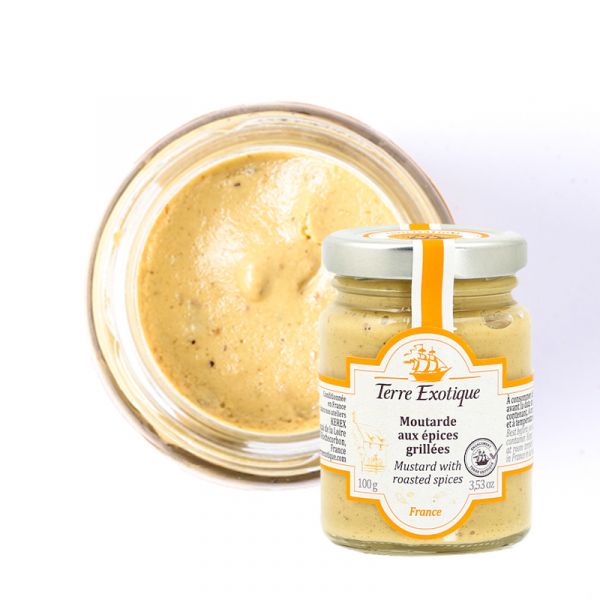





The steps of mustard production
Before becoming a pungent and flavorful paste, mustard is first the seed of black mustard (Brassica nigra). It takes at least 500,000 seeds and three major production steps to obtain 1kg of mustard.
- Step 1: The seeds are first crushed.
- Step 2: They are then mixed with verjus for several hours (unripe grape juice, whose acidity degree will bring pungency to the mustard).
- Step 3: The mixture is crushed and sieved again to properly separate the seed husk from the obtained paste.
Then the paste is left to mature for several days, which allows it to lose its too pronounced bitter taste after production. All that remains is to homogenize and package it.
Spicy and flavorful mustard with roasted spices
Mustard with roasted spices is a variant of traditional mustard. To prepare it, spices such as cumin, coriander, or paprika are grilled before being added to the mustard. This grilling technique allows the aromas of the spices to be revealed and gives the mustard a more complex flavor.
Using mustard with roasted spices in cooking
It pairs very well with meats, whether grilled, roasted, or braised. It can also be used to enhance sauces, dressings, or marinades. It is also delicious in a sandwich. Its spicy and flavorful taste is particularly appreciated in Indian and Asian cuisine, where it is often used to flavor curries and spicy dishes.
| Price/kg | 31 |
|---|---|
| Allergen | Moutarde, Sésame / Mustard, Sesame |
| Native country | FRANCE |
| Ingredients | Dijon mustard 98% (MUSTARD seeds, alcohol vinegar, water, salt), |
| grilled spices 2% (garlic, coriander, SESAME, cumin, fenugreek) | |
| fenugrec). | |
| Nutritional Info | VN Energie pour 100 g (energy for 100g) : 817 kJ / 197 kcal VN Matière grasse (fat) : 16 g Dont acide gras saturés (of which saturated fat) : 1 g VN Glucides (carbohydrate) : 2.4 g Dont sucres (of which sugars) : 2 g VN Protéines (protein) : 7.3 g Vn Sel (salt) : 6.6 g |
| Contenance | 100g |
| TRACES EVENTUELLES D'ALLERGÈNES | céleri, sésame, moutarde, fruits à coques. |
 Français
Français 

